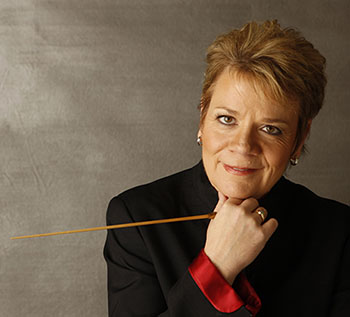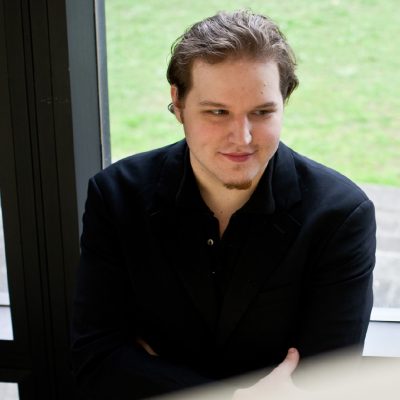Alsop gets (late) Romantic in Baltimore Symphony program

Marin Alsop conducted the Baltimore Symphony Orchestra at Strathmore Saturday night.
In last week’s program with the Baltimore Symphony Orchestra, Marin Alsop mixed in some late romantic bonbons with recent pieces by John Adams. In her second week, the BSO’s music director opted for a variety-free, entirely late-romantic program: a pair of tone poems from 1888 by Tchaikovsky and Strauss, and Rachmaninoff’s Piano Concerto No. 3 from 1909.
Drawn from a span of just over twenty years, this was a menu for an unadventurous palate served up in the Music Center at Strathmore on Saturday evening. The only variation to be found was in Alsop’s approach to the pieces, and the rather different results for each.
The BSO played Tchaikovsky’s Hamlet Overture-Fantasia, from the same year as the composer’s Fifth Symphony, heard last week, with almost no rubato. The four-square interpretation made the gloomy music depicting the barren stone of Elsinore — mostly in dry unisons at the start of the piece — a little too barren and devoid of interest.
Explosive brass playing enlivened the march sections, although the twelve soft horn calls announcing the stroke of midnight, and presumably the ghost of Hamlet’s father, were difficult to hear. The standout moments were the woebegone, perfectly intoned solos of principal oboist Katherine Needleman, embodying the sweet, deranged character of Ophelia. Set in B minor, a tritone removed from the F minor of the overall work, the Ophelia section sounds as if set in a different world, an interval symbolizing the couple’s estrangement.
Alsop and her musicians had greater success with Strauss’s Don Juan, a tour de force for all sections of the orchestra. Although from the same year as the piece that came before it, this tone poem is miles more advanced in inventive orchestration. The horns and strings had a steely arrogance in the returning statements of the seducer’s heroic theme.
Even so, it was the amorous episodes in between that featured the best playing: opulent string and harp murmurings, caressed by Tristan allusions in chromatic swells. Fine solos from Needleman and concertmaster Jonathan Carney, and a more nuanced, rubato-rich interpretation from Alsop, made this performance truly satisfying to hear. The mournful funeral music, marking the end of Strauss’s own Don Juan phase — he had met his future wife, Pauline, just before composing this piece — seemed rueful with a wink.
The most recent BSO performance of Rachmaninoff’s Piano Concerto No. 3 was in 2015, with Yuri Temirkanov and pianist Denis Matsuev. So Saturday was probably too soon to revisit this chestnut, unless an exemplary rendition was in the offing. Lukáš Vondráček, a perennial favorite of Alsop and the BSO, provided no such excuse.

Lukáš Vondráček
The young Czech pianist won the Queen Elisabeth Competition with the piece last year, with Alsop herself at the podium — a win that divided listeners. Vondráček clearly has a handle on this concerto’s Herculean technical demands, legendary for daunting even the bravest hearts, but not in a way that suggested he was in control on Saturday.
Especially in the third movement, which often threatened to run away from him, Vondráček rushed ahead of the orchestra repeatedly, in a sort of mania that required many on-the-spot corrections from Alsop. Some listeners clearly found it exhilarating, but most of the musical enjoyment the piece can offer in a more reasoned performance was lost in the frenzy.
The problems began in the moody opening theme of the first movement, the rapidity of the playing seeming to ignore the tempo marking (“Allegro ma non tanto”) and the reminder for a “commodo” (comfortable, easy-going) pace on piano. Vondráček having started already at a good clip, once Rachmaninoff ratcheted up the tempo, the performance became something of a blur. The second movement was also unsettled, the pianist’s explosive interpretation not always blending easily with the oozing pace of the BSO strings.
So much rests on the pianist’s handling of grand orchestral textures in this piece — most of the development in the first movement, for example, is essentially a long cadenza with a few instrumental lines. Vondráček attacked the keyboard, hulking over it and swiping at it with bear-like arms, but beyond the startling effect of the speed, there was not much to take away.
The program will be repeated 3 p.m. Sunday at Meyerhoff Symphony Hall. bsomusic.org; 410-783-8000.


